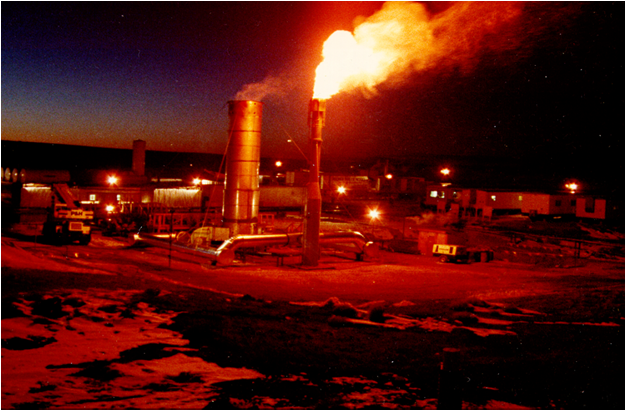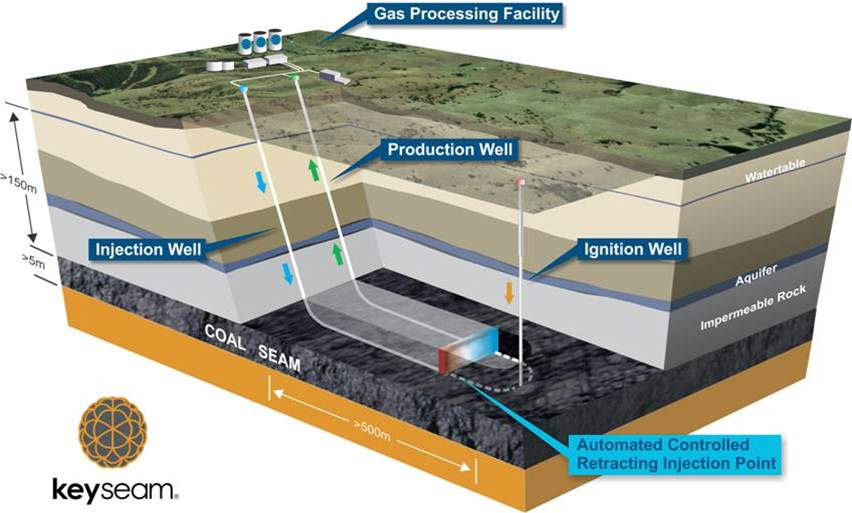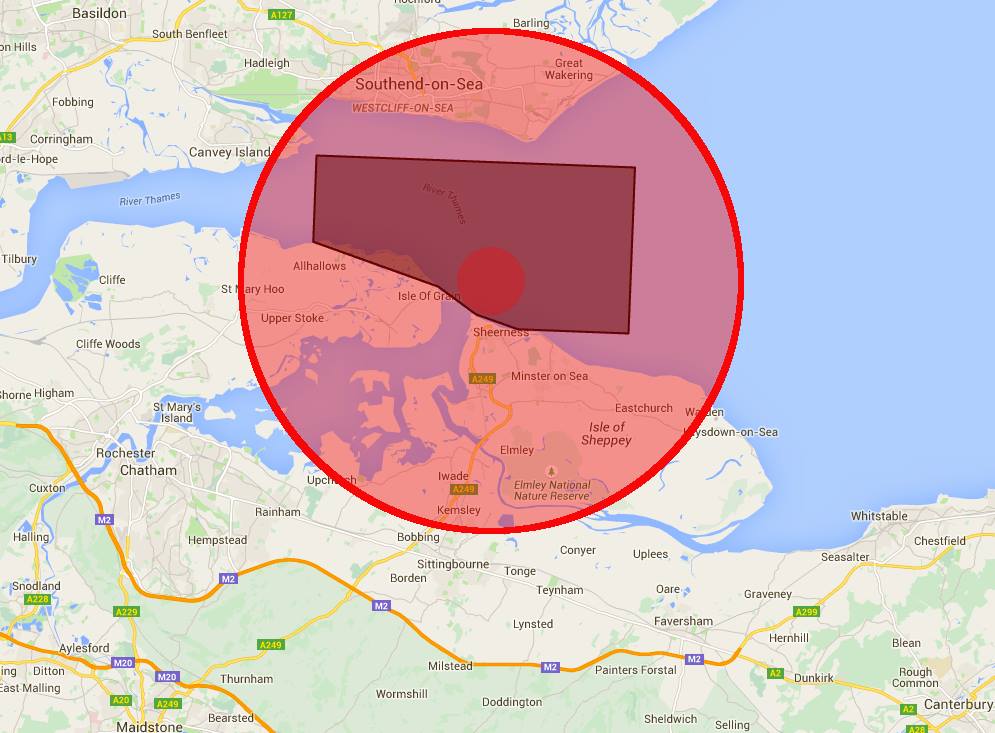A UCG Site on the Kent coastline poses a serious large-scale environmental hazard for the whole Thames Estuary.

Another topic that concerns us that does not get a lot of media coverage is Underground Coal Gasification (UCG) and the fact that there is a licence for this just of the Southend coastline.
Companies state explicitly that UCG is not fracking, but is this an attempt to make it sound safe, and promote it as a method of energy extraction?
Extracting gas by means of Underground Coal Gasification (UCG) is a highly-polluting extraction process which around the world has been largely unsuccessful, with many projects ending with disastrous consequences.
We are incredibly concerned by the presence of a UCG licence within a stones’ throw of the centre of Southend.
What is UCG?

Initially pioneered by the Soviet Union, Underground Coal Gasification (UCG) is an in-situ gasification process which sees high-pressure oxidants (usually Oxygen) and steam injected into unmined coal seams and ignited, fueling an underground combustion process. The resultant gases are then tapped and collected.
The high-pressure combustion process usually generates underground temperatures of 700-900°C but have been evidenced as reaching up to 1,500°C.
This process happens underground, creating toxic and carcinogenic coal tars that pose a significant threat to the environment.
The process chemically decomposes the coal and generates a cocktail of gasses including, Carbon Dioxide, Carbon Monoxide, and Methane, as well as contaminants such as Sulfur Oxides, Mono-Nitrogen Oxides, and Hydrogen Sulfides.
To produce significant amounts of gas, UCG would require multiple drill sites and massive processing facilities located onshore.
Underground coal gasification allows access to coal resources that are not economically recoverable by other technologies, e.g., seams that are too deep, low grade, or that have a thin stratum and is a classic example of extreme energy in action.
Safety Concerns.

UCG was given the green light for the Thames Estuary between Southend and the North Kent coast in 2012 when the UK government granted a licence to Riverside Energy to extract gas from under the Thames Estuary.
The area licenced includes the WW2 shipwreck of the SS. Richard Montgomery, still loaded with an estimated 1400 tonnes of explosives which for a long time has considered dangerously unstable.
The UCG permit is also in close proximity to the massive Isle of Grain LNG Terminal which stores one million cubic metres of Liquid Natural Gas on site and handles up to 15 million tonnes of Liquified Natural Gas per annum.
The process of Underground Coal Gasification (UCG) has been proven unsound and unsafe in other countries.
The Queensland Government has uncovered severe contamination of 320km2 of farmland surrounding Linc Energy’s UCG test site at Chinchilla, which resulted in criminal charges against the directors of the Australian company.
Toxic Syngas from underground fires has caused severe pollution to groundwater, soil, and air, putting hundreds of square kilometres of prime agricultural land west of Brisbane at risk.
Despite these findings, UCG speculators Cluff Natural Resources and the now-collapsed Five Quarter Energy have pushed ahead with plans for pilot projects and production in the UK.
The government has subsequently granted 27 licences for UCG offshore, worryingly close to large population centres.
The government appears to have ignored evidence that vast majority of small-scale trials of UCG over the last 80 years have invariably resulted in severe water contamination and/or explosions.
Both Cluff and Five Quarter have previously denied that UCG is experimental and has a track record of failure.
Five Quarter, which held 10 UK licences, called opponents of the technology “alarmist” and are known to have threatened a number of organisations and individuals with legal action.
Although Five Quarter has since ceased trading, the licences will inevitably be acquired by a competitor and the threat is far from over.
The 320km2 (10km radius) area affected by pollution created around the Linc trial is very significant for UK communities living close to UCG licence areas.
Hundreds of thousands of people live within a 10km radius of these sites earmarked for UCG.
UCG is not safe. It is an experimental technology with a track record of failure.
1987: Rocky Mountain, Wyoming
High levels of benzene and other carcinogenic contaminants were forced into groundwater.
1997: El Tremedal, Spain
Drill site explosion and blowout of toxic water. Syngas escaped the burn cavity to surrounding rock strata.
1999: Linc Energy, Chinchilla, Queensland
Test discontinued: 300km2 of farmland contaminated with toxic gas. Company charged with causing serious environmental harm (2015).
2007: Eskom, Majuba, South Africa
Two well failures and high volumes of liquid waste caused disposal problems. The Syngas produced contained toxic and corrosive hydrogen sulphide.
2010: Cougar Energy, Kingaroy, Queensland
The Kingaroy UCG well exploded after only five days of operation and resulted in carcinogenic benzene and toluene being detected in groundwater and in the fat of animals grazing in fields at the surface. Prosecuted & Fined (2013).
The major environmental concerns for UCG stem from subsidence, water contamination and toxic gas emissions.
UCG is based on unproven technology; The whole process is considered to present a greater riskier than fracking, with a high risk of severe environmental damage:
- Leakage of incredibly toxic chemicals.
- Subsidence of nearby and adjacent land.
- A risk to public health in densely populated areas from atmospheric pollution.
- Groundwater contamination.
In October 2016 after high profile campaigns the Scottish government banned UCG (as it has fracking), however, as with fracking, the rest of the UK is still at risk.
The Department for Business, Energy and Industrial Strategy said the government was “minded to not support” the technique, but has not enacted a ban or withdrawn any licences.
We will continue to monitor the North Kent UCG/0014/S licence.
You can read more about UCG on the Wikipedia Page: https://en.wikipedia.org/wiki/Underground_coal_gasification
Research for this article was partly obtained from: frack-off.org.uk
Friends of the Earth Scotland have also written a substantial press-release regarding UCG:
https://foe.scot/press-release/fuelling-the-fire-new-report-shows-underground-coal-gasification-a-reckless-experiment/